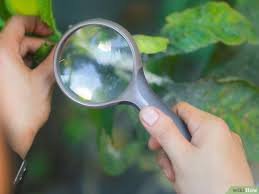FARMS: MEALYBUGS
WHAT ARE THE MEALYBUGS?
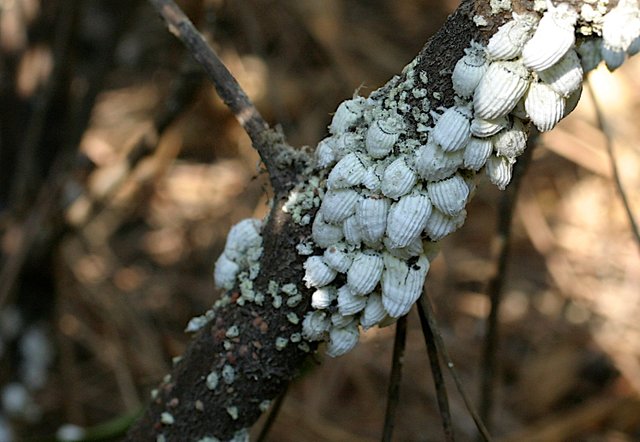
The mealybugs are parasitic insects of plants. There are approximately 2,000 species of mealybugs around the world. Although they are different, all types of mealybugs have in common the fact of being able to secrete waxy or resinous substances with which they build a shield, similar to scales, and they get hooked on the plants, on the stems and especially on the underside of leaves.
CHARACTERISTICS OF THE MEALYBUGS

The mealybugs are characterized in general by insects with very little mobility. Only the larvae move, and they do so at a little distance. Once they reach the final place, they form the protective shell and remain immobile.
PROBLEMS OF THE MEALYBUGS IN THE PLANTS
The mealybugs are the second most important pest for plants. Virtually all ornamental plants and fruit trees can be affected by this pest..
.
WHY ARE MEALYBUGS HARMFUL TO PLANTS?
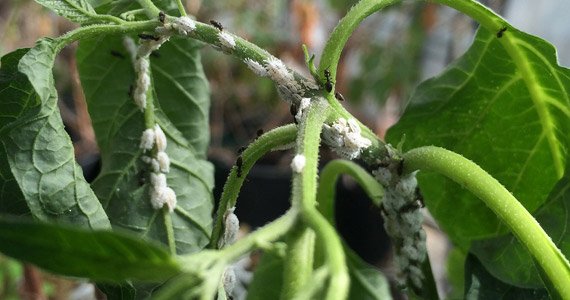
Most mealybugs are considered harmful because they feed on plant sap. For this, they have a sucking mouth, provided with a kind of stiletto, which they introduce into the plant tissues, sucking the sap from the host plants
.
WHAT DOES THE PLANT HAVE WITH MEALYBUGS?
By stealing the nutrients, the plants with the mealybugs weaken in general and delay their growth. The leaves may appear deformed, loss of color, dry or yellowish.
In addition to living parasitically on them, stealing the nutrients from the plants, many mealybugs secrete a sticky liquid that is attached to the plant and serves as the basis for the development of fungi, which also feed on plant tissues and plants. that hide like bold, because of its dark color.

The fungi, in addition to weakening the plant, prevent it from performing the chlorophyll function properly, since they cover part of the leaves, and spoil them aesthetically. If it is fruit trees, these pests, in addition to the previous effects, can reduce the production of the fruits or even cause their fall.
HOW TO KNOW IF YOUR PLANT HAS MEALYBUGS
The mealybugs in the initial period are quite difficult to recognize, especially those that present a mimetic color, which prevents them from distinguishing well. In addition, they usually place in areas that are not very visible, so when we realize it, the plant is usually infested.
The low mobility, the mimicry and the initial location in hidden areas determine that this plague is usually established quite easily. Once the plant is invaded, they are already very difficult to eradicate, therefore it is important to know some symptoms or places where they can begin to invade and eliminate them as soon as possible.
HOW TO SEARCH AND DETECT THE MEALYBUGS BEFORE INFECTING THE PLANTS.
It is very important therefore to realize that a plant loses vitality. The reason for this could be because the mealybugs are stealing their nutrients. If this happens, we will try to confirm the presence of these insects. For this, we will carry out the following checks:
- Touch the sheets to check if they are sticky. Most mealybugs secrete molasses that permeates the leaves and makes them sticky.
- Check if an insect moves: the mealybugs are small and only the larvae have mobility. Observe if there are small rounded insects with very long legs that move in some part of the plant.
- Look at the areas where mealybugs are usually placed: once well established, they are easy to see, because they can occupy large areas in stems, fruits or leaves. However, in an initial period, it is advisable to review the most hidden parts of the plant where they are usually located: axils of the leaves (area where the petiole of the leaf is hooked with the stem forming a certain angle); lower part of the petioles of the leaves, nerves of the underside of the leaves and lower part of the stems.
TYPES OF MEALYBUGS
Cottony mealybugs:
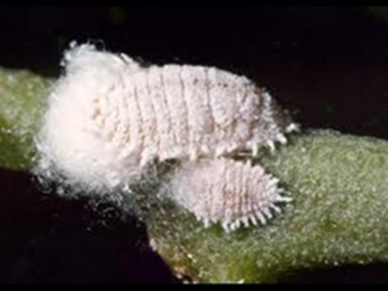
they are so called because their secretions are white and have a texture reminiscent of cotton. Within these secretions is where they lay their eggs. This type of insect secretes a lot of molasses, where the black fungus is usually formed.
Mealybugs with carapace:
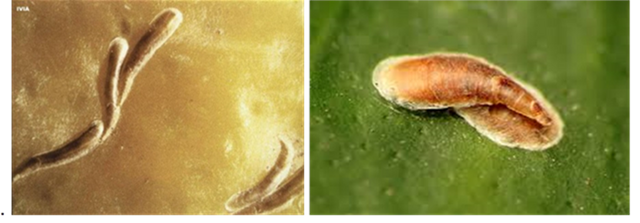
Within this group we have a series of Mealybugs that form a hardened shell, a kind of shield that protects them. Well-known within this group are serpetas and lice.
Among the serpetas, we have to highlight the fine serpeta (lepidoosaphes gloverii) and the thick serpeta (lepidosaphes beckii). The first is very common in citrus, manifested in the form of a kind of elongated shell, as if they were commas, light brown. The second is thicker and also occurs in citrus fruits. Both of them are placed on the stems, fruits and leaves of the plants, and prevent them from properly performing photosynthesis, producing yellowing and falling leaves.
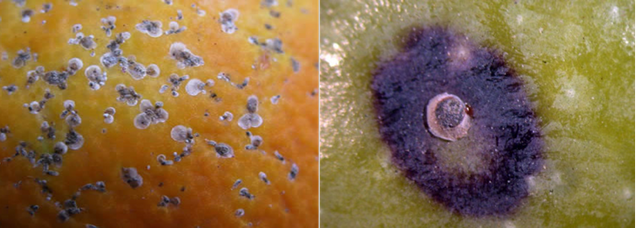
Inside the lice we have, for example, the gray louse or caspilla (parliamentary pergandii), of oval shape and gray color like the mussel shell. It constitutes a great threat to citrus fruits, mainly affecting twigs and fruits. On which it produces green spots and deformations, which makes it impossible to trade.
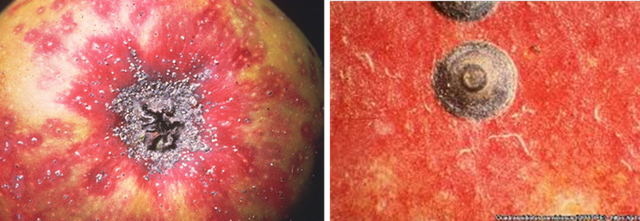
Another louse is the louse of St. Joseph, also called queresa de San Jose (quadraspidiotus perniciosus) with a rounded black shape. It mainly affects the apple trees causing reddish spots on the fruits that make their trade impossible.
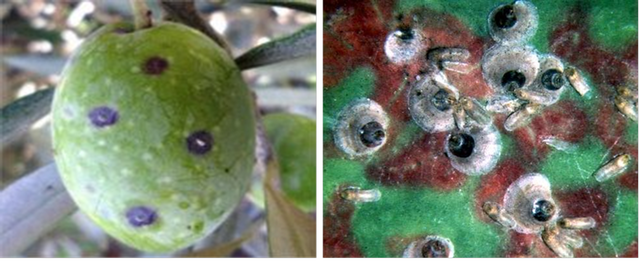
The parliamentary (parliamentary oleae) affects as its name indicates, the olive tree. The males form a carapace of oval shape and grayish color, while the females constitute it in the form of a pentagon and a violet color. It affects the fruits which deforms and decreases oil production.
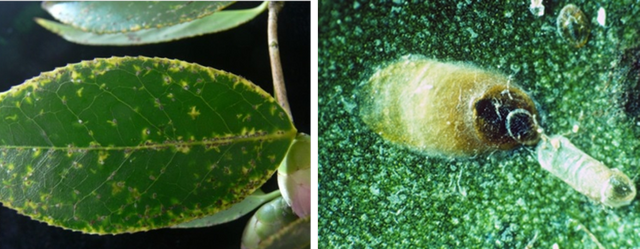
The parliamentary camelliae, affects both camellias, as well as other ornamental plants. Form flat oval shields, white, grayish or brown.

Other known lice are the black louse (zizyphi parliamentary), the red louse (chrysomphalus dictyospermi) and the white louse (aspidiotus nerii). The latter attacks olive trees, carob trees, citrus fruits and ornamental plants.
Mealybugs with leathery tegument
Within this group we have a series of Mealybugs that cover the upper part of their body with hardened tegument, they are generally known as caparretas:
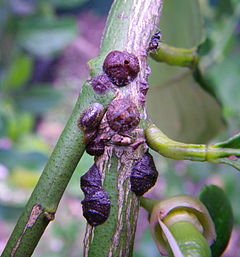
Among them we can highlight the Mealybugs of the olive tree, also called Black Cape or Mealybugs de la tizne (saissetia oleae). In addition to the olive trees attacks citrus. The females are the most abundant and the most outstanding. They are gray that changes to black when they lay eggs. The reproduction is done by parthenogenesis. The greatest damage that this plague produces is due to the great production of molasses that dyes the whole plant black color when the negrillas develop on them.
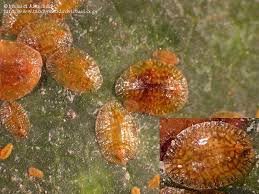
the mealybug of the citrus or queresa parda (coccus hesperidium) attacks the citrus fruit and practically all the fruit trees on whose branches and leaves produces a great suction of the sap.
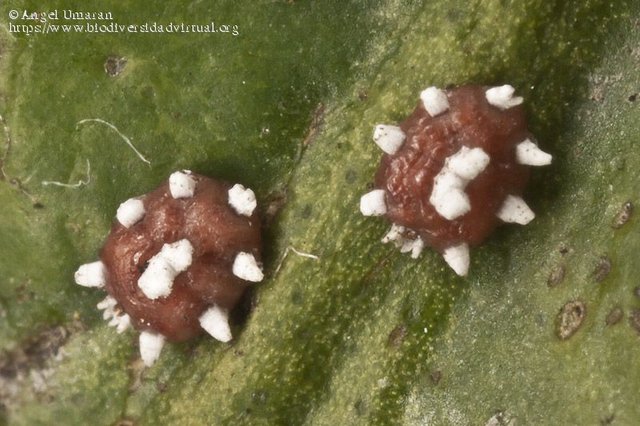
the white tick (ceroplastes sinensis) affects citrus fruits and other ornamental plants. It presents a reddish brown body with 6 marginal layers and a dorsal one. The females are very polyphonic, producing almost 2,000 pink eggs. As the previous ones are produced mainly by the large amount of molasses where mushrooms grow.

For more information visit:
https://www.botanical-online.com/cochinillas.htm
http://ipm.ucanr.edu/QT/scalescardsp.html
If you got here ... Infinite thanks for reading me.
"God bless you and protect you"

